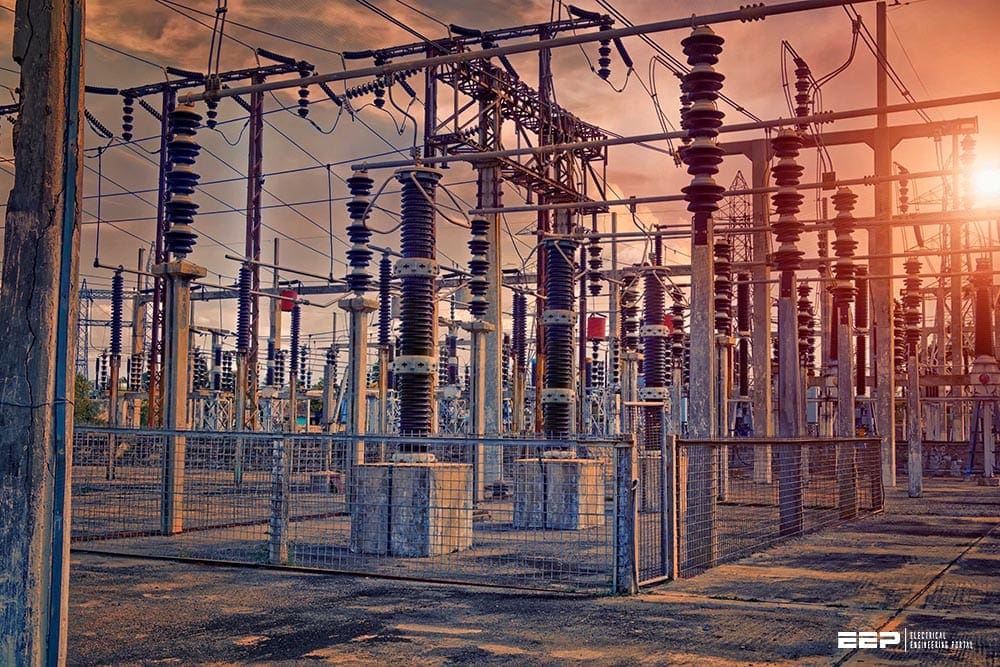Substation potential rise
During the passage of earth-fault current a substation earth electrode is subjected to an earth potential rise (EPR). Potential gradients develop in the surrounding ground area and these are highest adjacent to the substation earth electrode. The EPR reduces to approximately zero (or true earth potential) at some distance from the substation earth electrode.

A person could be at risk if they can simultaneously contact parts at different potential. Thus in a well-designed system, the potential differences between metallic items will be kept to safe levels regardless of the EPR.
Ground potential gradients around the electrode system, if great enough, can present a hazard to persons and so effective measures to limit them should be incorporated in the design.
The three main design parameters relate to touch, step and transfer potentials as defined below. These terms are shown as UvT, UvS and A respectively in Figure 1.
Touch potential
This term describes the voltage appearing between a person’s hands and feet (see Figure 1 below), or between a person’s hands. Hand to foot touch potential arises from the fact that the EPR at a person’s feet can be somewhat lower in value than that present on the buried earth electrode (and any connected metalwork).
In some situations, the hand-to-hand touch potential should be considered, for example if unbonded parts are within 2 m. The permissible limits for this scenario can be calculated as described in DD IEC/TS 60479-1, using the body impedance not exceeded by 5 % of the population.
In general, such situations should be designed out, e.g. by increasing separation or introducing barriers if the systems should be electrically separate, or by bonding items together. The siting of fences needs consideration in this regard.

Step potential
The potential gradient in the ground is greatest immediately adjacent to the substation earth electrode area. Accordingly, the maximum step potential at a time of substation potential rise will be experienced by a person who has one foot on the ground of maximum potential rise
and the other foot one step towards true earth.
For purposes of assessment the step distance is taken as one metre. (See Figure 1).
Transfer potential
A metallic object having length – a fence, a pipe, a cable sheath or a cable core, for example, may be located so as to bring in (import) or carry out (export) a potential to or from the site.
By such means a remote, or true earth (zero) potential can be transferred into an area of high earth potential rise (HPR) or vice-versa.
Bonding the cable or pipe to the substation system might reduce local risk but could create a problem elsewhere; isolation units or insulated inserts (for pipework) are typical solutions that may need to be considered.
The limits for permissible transfer potential relate to shock risk (touch and step potential), and equipment damage / insulation breakdown (withstand voltage).
| Title: | Design, installation, testing and maintenance of main earthing systems in substations – ENERGY NETWORKS ASSOCIATION |
| Format: | |
| Size: | 2.5 MB |
| Pages: | 110 |
| Download: | Here 🔗 (Get Premium Membership) | Video Courses | Download Updates |



thank you !
Really appreciate, this are the staffs that I looking for for more than 20 years.
thks
How do I sample your free templates because I cant open any thing.
I really appreciate your efforts towards engineers and I hope you success
Good to understand